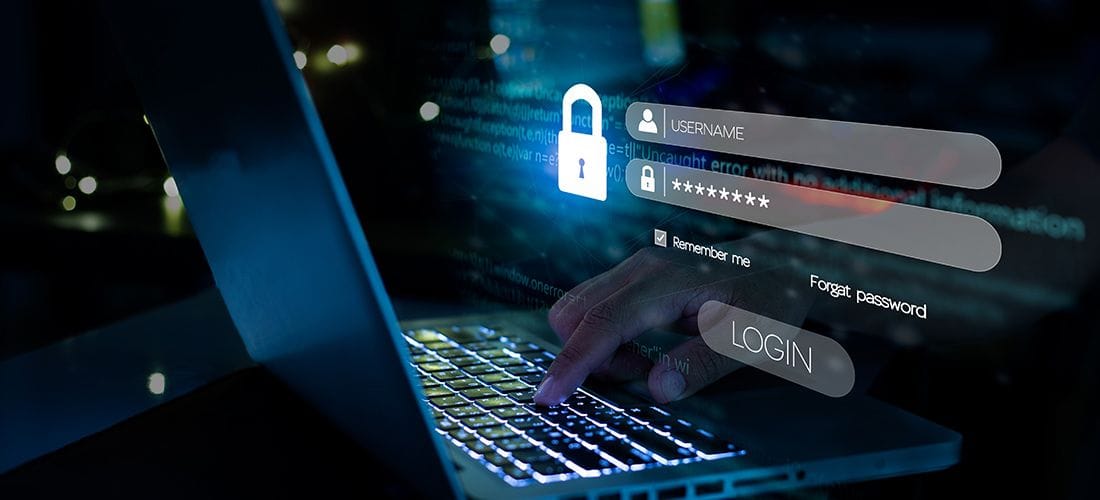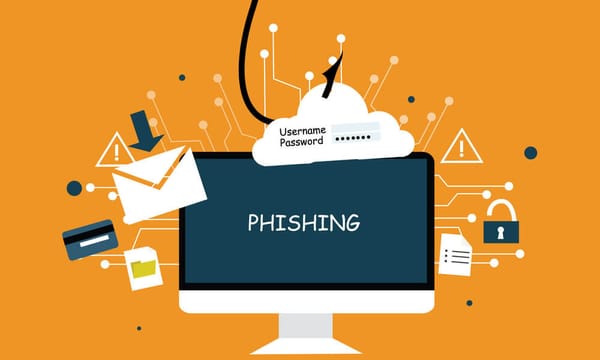Pass-the-Hash Attacks: Advanced Techniques, Detection, and Mitigation

Credential compromise remains one of the most effective attack vectors for threat actors. Among these techniques, Pass-the-Hash (PtH) attacks stand out as a particularly powerful method that allows attackers to move laterally within a network without needing to decrypt user passwords. This technique exploits a fundamental weakness in how Windows systems handle NTLM authentication, enabling attackers to use password hashes directly rather than cleartext passwords.
In this article, we'll dive deep into how Pass-the-Hash attacks work, the tools used by attackers, advanced detection methods, and essential mitigation strategies to protect your enterprise environment against these sophisticated threats. Whether you're a SOC analyst, incident responder, or security architect, understanding these attack techniques is crucial for building effective defenses against modern adversaries.
Understanding the Fundamentals of Pass-the-Hash Attacks
Pass-the-Hash is an authentication bypass technique that leverages captured NTLM or LM password hashes to authenticate to remote systems or services. Unlike traditional password attacks that require cracking the hash to obtain the cleartext password, PtH attacks bypass this step entirely by using the hash value itself for authentication. This technique is similar to but distinct from NTLM relay attacks in the attacker's toolkit.
The technique is particularly devastating because:
- It exploits the inherent design of Windows authentication protocols
- It enables lateral movement without triggering password cracking alerts
- It can persist even after password changes, as long as the attacker maintains access to extract new hashes
How Windows Authentication Enables PtH Attacks
When a user authenticates to a Windows system using NTLM authentication protocol, the following process occurs:
- The client computes a hash of the user's password
- This hash is used to encrypt a challenge sent by the server
- The server, which also stores the hash, performs the same encryption
- If both encrypted values match, authentication succeeds
The critical vulnerability lies in the fact that the password hash itself becomes the effective authentication credential. If an attacker can extract this hash from memory or the Security Account Manager (SAM) database, they can reuse it without ever knowing the original password. This feature of Windows authentication is what makes lateral movement via Pass-the-Hash so effective in Active Directory environments.
Advanced PtH Attack Techniques in Enterprise Networks
Modern Pass-the-Hash attacks have evolved significantly beyond their original implementation. Sophisticated threat actors and red teams regularly employ these techniques during security breaches and penetration tests. Let's examine the most advanced techniques in use today:
Memory Extraction Techniques
The most common method for obtaining NTLM hashes is through memory extraction from a compromised system. Advanced attackers typically:
- Elevate privileges to SYSTEM level access
- Inject code into the LSASS (Local Security Authority Subsystem Service) process
- Dump credentials stored in memory
- Parse the memory dump to extract NTLM hashes
Tools like Mimikatz have simplified this process dramatically, making it accessible even to less sophisticated attackers. For a detailed examination of LSASS memory dumping techniques, read our guide on dumping LSASS memory for credential extraction.
Domain Controller Synchronization Attacks
For enterprise environments, attackers target domain controllers using techniques like DCSync attacks. This sophisticated method:
- Abuses the Active Directory replication protocol
- Impersonates a domain controller requesting password data
- Extracts NTLM hashes for all domain users without accessing the domain controller directly
- Bypasses many traditional security controls and detection tools
This technique is particularly dangerous as it can be executed remotely with the right privileges and leaves minimal forensic evidence. Tools like Mimikatz and Empire have made DCSync attacks accessible to both nation-state actors and criminal groups conducting Advanced Persistent Threat (APT) operations. These attacks are frequently used during domain controller compromises in sophisticated breach scenarios.
NTDS.dit Extraction
The NTDS.dit file contains the Active Directory database, including all user password hashes. Advanced attackers target this file through:
- Volume Shadow Copy creation
- Direct file extraction
- Offline parsing to recover all domain password hashes
Once extracted, this provides the attacker with authentication material for the entire domain.
Detection Strategies for Pass-the-Hash Attacks in Security Operations
Detecting Pass-the-Hash attacks requires a multi-layered approach focused on both host and network indicators. Security Operations Center (SOC) teams need comprehensive visibility to identify these stealthy attacks. Here are advanced detection strategies that blue teams and threat hunters should implement:
Memory Forensics
Memory analysis provides the most direct evidence of PtH attacks. Security teams should:
- Implement automated memory scanning for LSASS access patterns
- Deploy Endpoint Detection and Response (EDR) solutions that monitor process access to LSASS
- Create detection rules for suspicious DLL loading associated with credential access
Our research at PwnVector's Threat Hunting Lab has shown that memory forensics can detect over 94% of credential theft attempts when properly implemented. For more information on implementing effective detection strategies, see our guide on advanced threat hunting techniques.
Authentication Anomaly Detection
Pass-the-Hash attacks create distinctive authentication patterns that can be identified through Security Information and Event Management (SIEM) solutions monitoring for:
- Authentication from unusual source systems
- Multiple accounts authenticating from the same source
- Authentication events missing preceding logon events
- Logons using NTLM when Kerberos is the organization standard
- Abnormal access patterns outside of business hours or from unexpected locations
- Pass-the-Hash indicators in Windows Event ID 4624 (Logon) events
Implementing advanced User Entity Behavior Analytics (UEBA) can significantly improve detection rates for these anomalies. Modern threat hunting teams combine SIEM data with machine learning algorithms to identify subtle patterns indicative of credential theft attacks. Many organizations are now implementing these capabilities as part of a comprehensive SOC strategy.
Network Traffic Analysis
Network-based detection can identify PtH attacks through:
- NTLM authentication traffic analysis
- Anomalous SMB session patterns
- Lateral movement signatures
- Authentication protocol downgrade attempts
Modern Network Detection and Response (NDR) platforms can be tuned to alert on these specific patterns, providing an additional detection layer. These capabilities are especially important for detecting sophisticated attacks like Command and Control (C2) communications that often follow credential theft.
Mitigation Strategies Against Pass-the-Hash for Enhanced Security Posture
Protecting against Pass-the-Hash attacks requires a defense-in-depth approach focusing on prevention, containment, and credential protection. Chief Information Security Officers (CISOs) and security architects should prioritize these controls as part of a comprehensive identity security strategy.
Credential Protection Enhancements
- Implement Credential Guard on Windows 10/11 and Server 2016+ systems to isolate credential material in a virtualization-based security environment
- Deploy Protected Users security group for privileged accounts
- Enable LSASS protection (RunAsPPL) to prevent memory reading without special privileges
- Implement Windows Defender Remote Credential Guard for secure remote authentication
These technologies fundamentally change how credentials are stored and processed, making them substantially more resistant to theft.
Administrative Access Controls
Limiting administrative access is crucial for containing the impact of PtH attacks:
- Implement tiered administration model separating workstation, server, and domain admin accounts
- Use Just-In-Time (JIT) administration through Privileged Access Management (PAM) solutions
- Enforce strict workstation restrictions for administrative accounts
- Implement Local Administrator Password Solution (LAPS) to ensure unique local admin passwords
Our PwnVector PAM Implementation Guide provides a comprehensive framework for deploying these controls effectively.
Authentication Hardening
Strengthening authentication mechanisms reduces the viability of PtH attacks:
- Disable NTLM authentication where possible, preferring Kerberos
- Implement NTLM auditing to identify systems still requiring NTLM
- Deploy Multi-Factor Authentication (MFA) for sensitive access
- Utilize Device Health Attestation to ensure system integrity before authentication
Advanced Host Hardening
Additional host-based controls create further barriers to credential theft:
- Application control policies to prevent execution of credential theft tools
- Just Enough Administration (JEA) endpoints for administrative tasks
- Remove unnecessary administrative rights from standard user accounts
- Regular credential rotation for service accounts
Real-World Case Study: PtH Attack on a Financial Institution
In a recent incident response engagement, our team encountered a sophisticated Pass-the-Hash attack against a mid-sized financial institution. The attack progressed through several phases:
- Initial Access: The attacker compromised a user workstation through a phishing email
- Privilege Escalation: Local admin rights were obtained through an unpatched Windows vulnerability
- Credential Theft: LSASS memory was dumped using a modified version of Mimikatz
- Lateral Movement: The extracted hashes were used to authenticate to multiple servers
- Domain Compromise: Eventually, domain admin credentials were compromised
The organization's detection capabilities failed because:
- They lacked memory monitoring controls
- Authentication logs weren't centralized or analyzed
- Lateral movement detection was absent
- Administrative accounts had excessive privileges
After implementing the mitigation strategies described in this article, the organization successfully detected and blocked a second attempt by the same threat actor. Their improved security posture now includes robust ransomware detection and response capabilities as well, since credential theft often precedes ransomware deployment.
Recommendations and Best Practices
Based on our extensive experience handling PtH incidents, we recommend the following approach for organizations seeking to improve their security posture:
- Begin with a credential exposure assessment to identify current vulnerabilities
- Implement a tiered PAM solution to contain administrative access
- Deploy host-based protections like Credential Guard and LSASS protection
- Establish robust monitoring for credential theft indicators
- Conduct regular password hygiene to minimize credential reuse
Organizations should prioritize these controls based on their specific risk profile and the sensitivity of their environment.
Conclusion: Building Resilience Against Modern Pass-the-Hash Attacks
Pass-the-Hash attacks remain one of the most potent techniques in an attacker's arsenal for breaching enterprise networks and achieving domain dominance. By understanding the technical mechanisms behind these attacks and implementing layered defenses, security teams can significantly reduce their organization's exposure to this persistent threat. For a broader understanding of how these techniques fit into the overall cybersecurity landscape, see our ultimate guide to cybersecurity in 2025.
The key to effective defense lies in combining strong credential protection, robust detection capabilities, and strict administrative access controls. Together, these measures create a resilient security architecture that can withstand sophisticated credential theft attempts and limit potential lateral movement opportunities for attackers.
For more advanced guidance on securing your organization against credential-based attacks, explore our related resources:
- Advanced Kerberos Security Hardening
- EDR Deployment for Credential Theft Detection
- Zero Trust Implementation Guide
- Active Directory Security Best Practices
- Windows Credential Guard Implementation
Have you encountered Pass-the-Hash attacks in your environment? Share your experiences in the comments below or reach out to our incident response team for assistance with active compromises.




